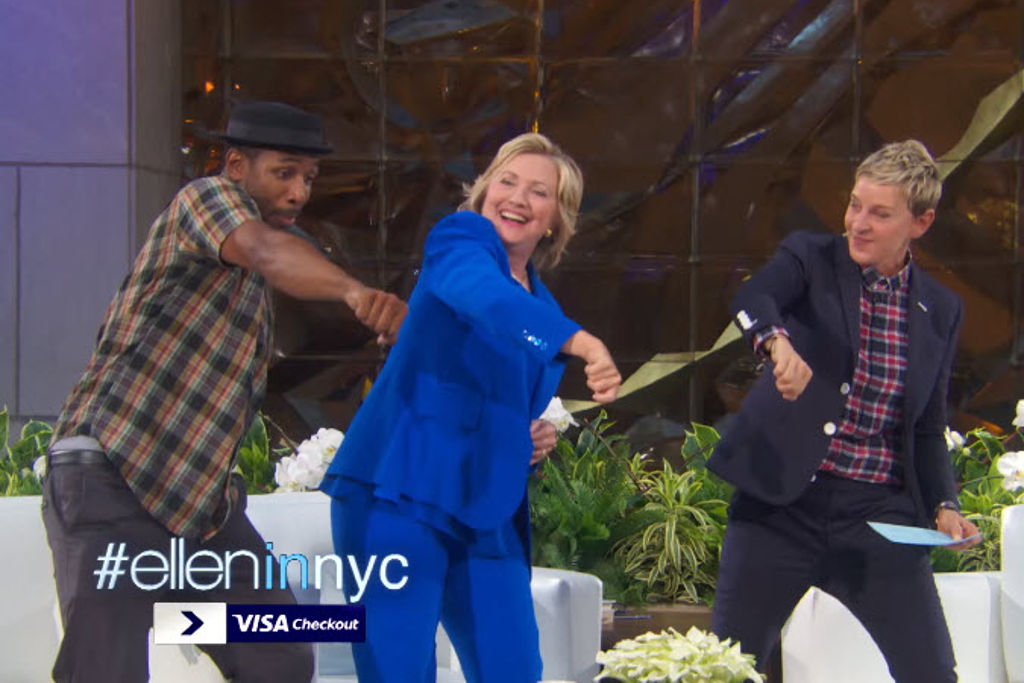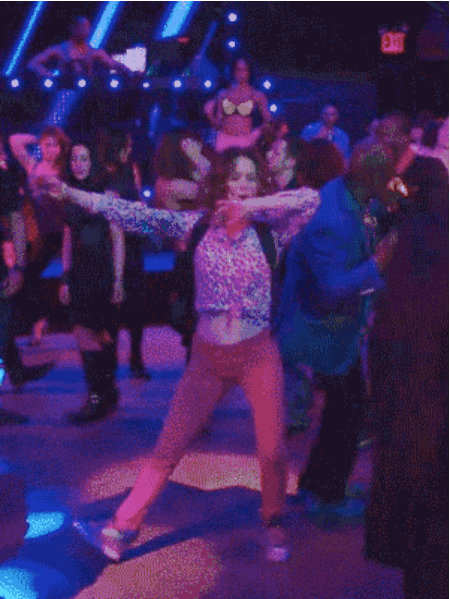Three Fascinating Ways The Internet Has Changed The Way We Dance
In the immortal words of Kimmy Schmidt, “dancing is about butts now”.

Brought to you by Art & About and the City of Sydney.
–
In the immortal words of Kimmy Schmidt, “dancing is about butts now”.

Thank you, Kimmy.
That fundamental principle aside, the last few years have seen some pretty interesting developments in how we move our arms, legs and/or butts to music. Dancing has always been a performative act, but the viral potential of Vines, YouTube videos and TV appearances have seen some forms of dance adapt to this new reality in surprising ways, finding mammoth audiences and inspiring cultural tropes in ways that just weren’t possible before. From Sia to CGI rodents, here are some of the most intriguing ways dance is evolving in the digital age.
–
Do It For The Vine: How The Nae Nae Took Over Your Feed
Originally coined by Atlanta hip-hop troupe We Are Toonz in their 2013 hit ‘Drop That #NaeNae‘, Nae Nae was probably the first dance to gain mainstream awareness and recognition almost exclusively via the internet. (Besides Harlem Shake and Gangnam Style, but we do not speak of them. Those were dark times.)
More specifically, Nae Nae went big on Vine, the “sleeping giant” micro-video social media platform best known for its in-jokes, its growing pool of LA-based Millennial personalities and its incredible insights into the mind of Jeb Bush. Over the last few years, clips of college football and basketball teams, celebrities, tiny, bewildered kids and tiny, bewildered old ladies doing the Nae Nae for the Vine has become a staple of the network’s vast community of users, and a cultural trope in its own right.
Last year, rapper Silentó cashed in on the craze big-time with ‘Watch Me (Whip/Nae Nae)’, that song your dad is only vaguely aware of but absolutely infuriated by. With ‘Watch Me’ racking up nearly 800 million views on YouTube, Nae Nae’s status was sealed.
Embraced by everyone from Steph Curry to Pharrell to TLC to Alvin and the Chipmunks, Nae Nae was beloved the world over until September last year, when Democratic Presidential frontrunner Hillary Clinton went on Ellen, learned how to do it and ruined it for absolutely everybody else.
You tried, Hil.
–
No More Naff: The Rise Of The Professional Dance Clip
In an age where YouTube view counts matter more than Billboard Top 200 placings, the music video has re-entered the cultural consciousness after a fairly long time in the wilderness. As artists and studios have realised the potential of the film clip as a piece of art in itself, the lovably naff dance moves, fashion choices and generally daggy vibe of film clips from ’90s and early-’00s acts like the Backstreet Boys and NSYNC have fallen by the wayside.

Never forget.
In their place has risen the contemporary dance clip: music videos to chart-busting pop songs that put bold, experimental and jaw-droppingly talented dancers front and centre, and vault them to fame in the process. Married dance duo Keone and Mariel Madrid have seen their profiles skyrocket after starring in the clip to Justin Bieber’s ‘Love Yourself’, and New Zealand-based ReQuest Dance Crew saw a similar spike in attention after choreographing the moves to Bieber’s ‘Sorry’.
Some artists have gone further, partnering with the dancers who make their clips so watchable over multiple projects. In her film clips for singles like ‘Chandelier’, ‘Elastic Heart’ and ‘Cheap Thrills‘, Aussie pop music icon Sia introduced the world to child dance prodigy Maddie Ziegler, while the video for ‘Alive’ featured nine-year-old Japanese child actor and dancer Mahiro Takano as a tiny, enraged martial arts master.
Besides rocketing the dancers they showcase to levels of fame they could otherwise only imagine, the astonishing view counts these sorts of clips rack up — ‘Love Yourself’ has been watched 500 million times in less than five months — have given the humble film clip a much-needed relevance boost. In an era where MTV devotes more time to shows about ex-lovers fighting and aggressively making out on the beach than music videos, that’s no small thing.
–
Tutting
Not as widely known as Nae Nae or aggressively adopted by Hillary Clinton as dabbing, tutting takes a unique, genre-defying approach to dance in that it almost entirely revolves around finger and hand movements. Taking inspiration from the artistic style of ancient Egyptian hieroglyphics, tutting merges hip-hop, breakdancing and voguing and has attracted increasing attention over the last few years through feed-busting online videos.
Tutting artists like Dytto, PNUT and K.E.N-DIGIT have racked up millions of views in their own right, started garnering attention from major outlets like BuzzFeed and even featured in film clips like Taylor Swift’s ‘Shake It Off’.
Now, thanks to local dance troupe Shaun Parker & Company, tutting’s coming to Sydney. As part of ‘TUT’, Parker & Company’s latest show for the City of Sydney’s Art & About Sydney program, dozens of local dancers will be putting on large-scale demonstrations of tutting around the city. ‘TUT’ will be hitting streets around Pitt Street Mall and Chinatown’s Dixon Street Plaza on Thursdays and Fridays throughout April, so if you’re in the mood for some finger-dancing over the next few weeks, move your feet.
–
What: TUT by Shaun Parker & Company (further info here)
When: Thursday, April 7 to Friday, April 22
Where: Pitt St Mall and Chinatown, Sydney
–
Brought to you by Art & About and the City of Sydney.